What is Marijuana Commercialization? And What Happens When Marijuana is Commercialized?
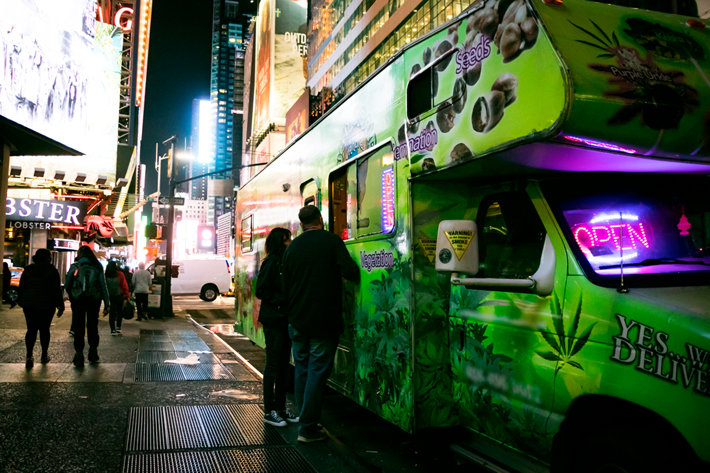
It’s probably not obvious to the average person, but it makes a big difference in a state when marijuana is commercialized. The negative impacts can escalate dramatically and there seems to be no way to stop them. To learn what commercialization is and the effects it can create, let’s look at Colorado’s history of legalization and commercialization.
Definition: Commercialization of a product means that it is manufactured and sold primarily for financial gain rather than to help people or for some other purpose.
In November 2000, Colorado voters approved the medical use of marijuana. There were no growers or retail stores at that time so patients or their caregivers were allowed to grow a small number of cannabis plants for their own use.
In 2009, the landscape changed. A judge ruled that caregivers could “dispense” this drug to more than five patients (the previous limit). Many people saw an opportunity to set up businesses to do just this and the medical marijuana dispensary was born. At about the same time, U.S. Attorneys were instructed that enforcement of federal laws related to medical marijuana was among their lowest priorities.
The “Green Rush” was on.
Before 2009, there were no more than 5,000 medical marijuana cardholders and no dispensaries. By the end of 2012, there were 100,000 cardholders and 500 licensed dispensaries. There were grow operations and manufacturers of edible cannabis products all over the state. This was the commercialization era of marijuana in the state.
From being a more or less compassionate relaxing of laws for a few thousand people, there were now thousands of business people and entrepreneurs eager to rake in profits.
Recreational Marijuana Was Next
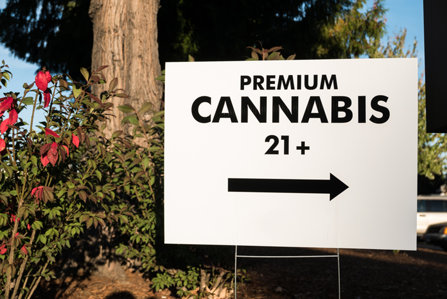
In November 2012, Colorado voters amended their Constitution to legalize marijuana for recreational use by anyone over 21. This amendment also allowed for retail stores and other businesses to supply the recreational trade. As of January 1, 2014, these retail stores opened their doors and customers lined up around the block.
Of course, now all these businesses were in competition with each other. Because of state fees and taxes, their product was necessarily more expensive than illicit products. So how could they stand out in this crowded field?
They could make their products more potent. There were many ways to accomplish this attractive goal.
Aggressive Marketing of Cannabis Products
By 2016, CNN reported on the increase in potency of Colorado’s cannabis products. One grower they interviewed stated that his products ranged in potency from 6% tetrahydrocannabinol (THC) to 28%.
How much stronger was this pot compared to earlier pot? We can’t exactly compare these potencies to the strength of 1970s pot because testing methods have changed over the years. We can compare them to the average potency of seized marijuana starting with 1995, as that is when the current standards were developed. Here’s the chart showing increasing potencies between 1995 and 2014.
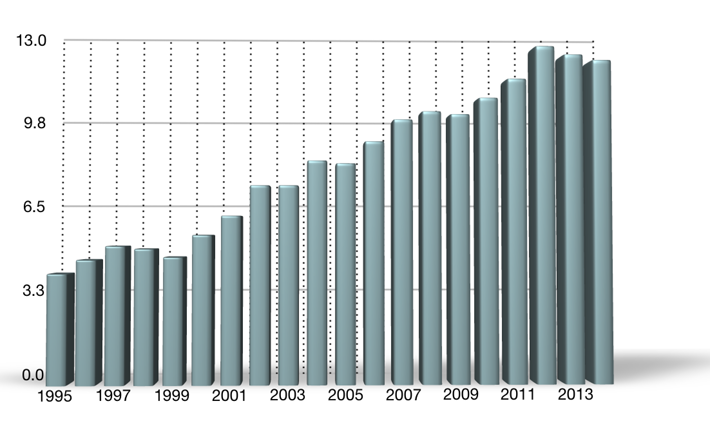
Keep in mind that these are average potencies, not maximum potencies.
Edibles hitting the market boosted the amount of THC one could purchase even higher. A single candy bar, for example, could contain 100 mg of THC. Some people found it easy to overdose on a typical edible product. The Los Angeles Times estimated that a beginner might achieve a “high” that was too strong if they consumed 10 mg of THC. To limit their high with the candy bar described above, that person would need to eat only one-tenth of the candy bar.
And thus you have the situation that caused 19-year-old Levy Ponga to jump off a hotel balcony to his death in 2014. He consumed an entire cannabis-infused cookie, thereby ingesting six times the recommended dose. He became delusional and jumped before anyone could stop him.
Concentrates followed edibles onto the market, providing products that were 60% to 80% THC. Newer extracts are 90% THC and up.
“This is human nature. Or maybe it's just capitalism. One person makes a superlative product, which prompts the next person to best them. Given the opportunity to try something extreme—the biggest, the strongest, the best, the craziest—plenty of people will go for it.”
An article on The Atlantic website describes this phenomenon perfectly: “This is human nature. Or maybe it's just capitalism. One person makes a superlative product, which prompts the next person to best them. Given the opportunity to try something extreme—the biggest, the strongest, the best, the craziest—plenty of people will go for it.”
This is what happens with unrestrained commercialization. The desire to stand out in a crowded field results in growers trying to develop the most potent strains and concentrates without consideration for the effects of an addictive drug on their customers.
The Impacts of Commercialization
A few times a year, a law enforcement-related office in Denver issues a complete report on the impact of legalized marijuana on the state. Their most recent report was issued in September of 2018. This law enforcement office is the Rocky Mountain High Intensity Drug Trafficking Area office, a coordination office for all branches of law enforcement for an area identified as being particularly subject to drug trafficking.
In this report, statistics often compare these three time periods:
- Pre-commercialization with limited medical use (2000-2008)
- Medical marijuana commercialization (2009 to the present)
- Recreational marijuana era (2013 to the present, with retail stores opening in 2014)
Here’s some of the statistics included in this report.
- After recreational marijuana was legalized, traffic deaths in which drivers tested positive for marijuana increased 109%.
- In 2013, one person was killed every 6.5 days as a result of the actions of a driver who tested positive for marijuana. By 2018, one person died every 3 days.
- Since 2013, adult marijuana use increased 94% and is 96% higher than the national average.
- Emergency room visits related to marijuana use increased 54% between 2013 and 2017.
- Toxicology reports from suicides that showed positive results for marijuana increased from 14% in 2013 to 23% in 2017.
- Among Colorado residents aged 12 and older, 10.6% were marijuana users in the pre-legalization days but after legalization, 16% were users.
- As of 2016, 32% of Coloradans aged 18 to 25 had used marijuana in the past month but in 2005, this figure was only 21%.
The black market in Colorado didn’t disappear as was promised with legalized post. Seizures from the U.S Postal System increased 1,042% since recreational marijuana was legalized.
Here’s one way to gauge the impact of marijuana legalization on Colorado schools.
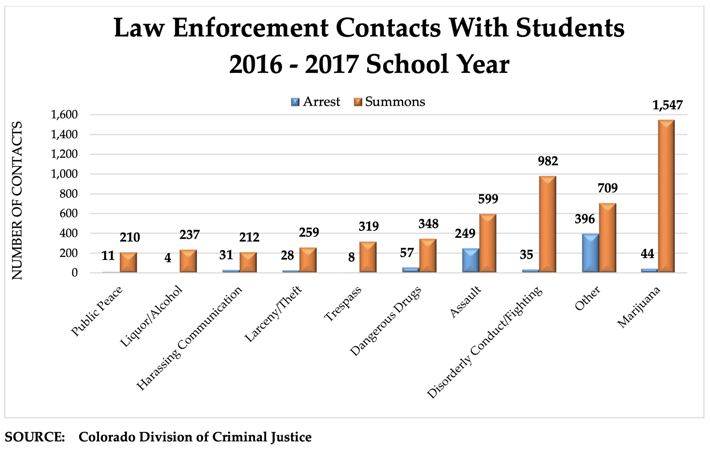
There were other effects that might have been a little harder to see coming. A website reviewing rental activities in Denver noted increasing costs of real estate because of an influx of people wanting to take advantage of legalization and increased destruction of residential properties because of high-humidity grow operations or marijuana use contaminating a property with the smell of cannabis. Some people trying to distill THC from herbal cannabis (the leafy plant) cause fires and explosions.
A 2018 study stated that Coloradans spend $4.57 to mitigate the harmful effects of marijuana for every tax dollar generated by sales.
By 2016, Denver city officials were trying to curb downtown violence that had its roots in legalization. By 2017, the city had banned marijuana consumption in a downtown district in an effort to reduce these problems. By 2018, Colorado Governor John Hickenlooper noted that violent crime in the state had increased 12.5% while the national increase was only 5% and he did not rule out the possibility of decriminalizing recreational marijuana in his state.
Good Idea or Not?
We don’t allow unrestrained commercialization of alcoholic products. There are restraints on when and where you can sell and consume this product. We don’t allow unrestrained commercialization of opioid painkillers. There are many laws on the books controlling who can make them and who can buy them. But for marijuana products in Colorado, unrestrained commercialization seems to be the norm. What do you think? Was this a good idea or not?
Sources:
- https://rmhidta.org/files/D2DF/FINAL-Volume6.pdf
- https://www.westword.com/news/the-history-of-cannabis-in-coloradoor-how-the-state-went-to-pot-5118475
- https://www.cnn.com/2016/10/21/health/colorado-marijuana-potency-above-national-average/index.html
- https://www.narconon.org/drug-information/marijuana/
- https://www.ncbi.nlm.nih.gov/pmc/articles/PMC4987131/
- https://www.theatlantic.com/technology/archive/2015/03/was-marijuana-really-less-potent-in-the-1960s/387010/
- https://www.narconon.org/drug-abuse/marijuana/enlightenment.html
- https://www.narconon.org/drug-abuse/marijuana/addictive.html
- https://www.9news.com/article/news/local/next/taking-a-look-at-the-impact-of-higher-potency-recreational-marijuana/73-30e77ce2-26fc-4336-8dc2-ad1bca292d1a
- https://www.latimes.com/projects/la-me-weed-101-thc-
- https://www.cbsnews.com/news/marijuana-cookie-death-colorado-warning-labels-cdc/
- https://www.pbs.org/newshour/show/safe-super-concentrated-marijuana
- https://rentmedenver.com/detrimental-effects-marijuana-legalization-colorado-real-estate/
- https://www.denverpost.com/2018/12/08/colorado-cost-of-marijuana-tax-dollars/
- https://www.thedenverchannel.com/news/local-news/marijuana/homeless-coming-to-denver-for-pot-causing-havoc-on-the-16th-street-mall
- https://www.denverpost.com/2017/12/01/denver-16th-street-mall-smoking-ban/

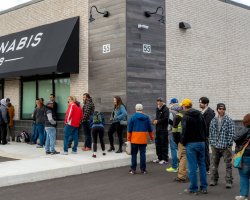
 ®
®